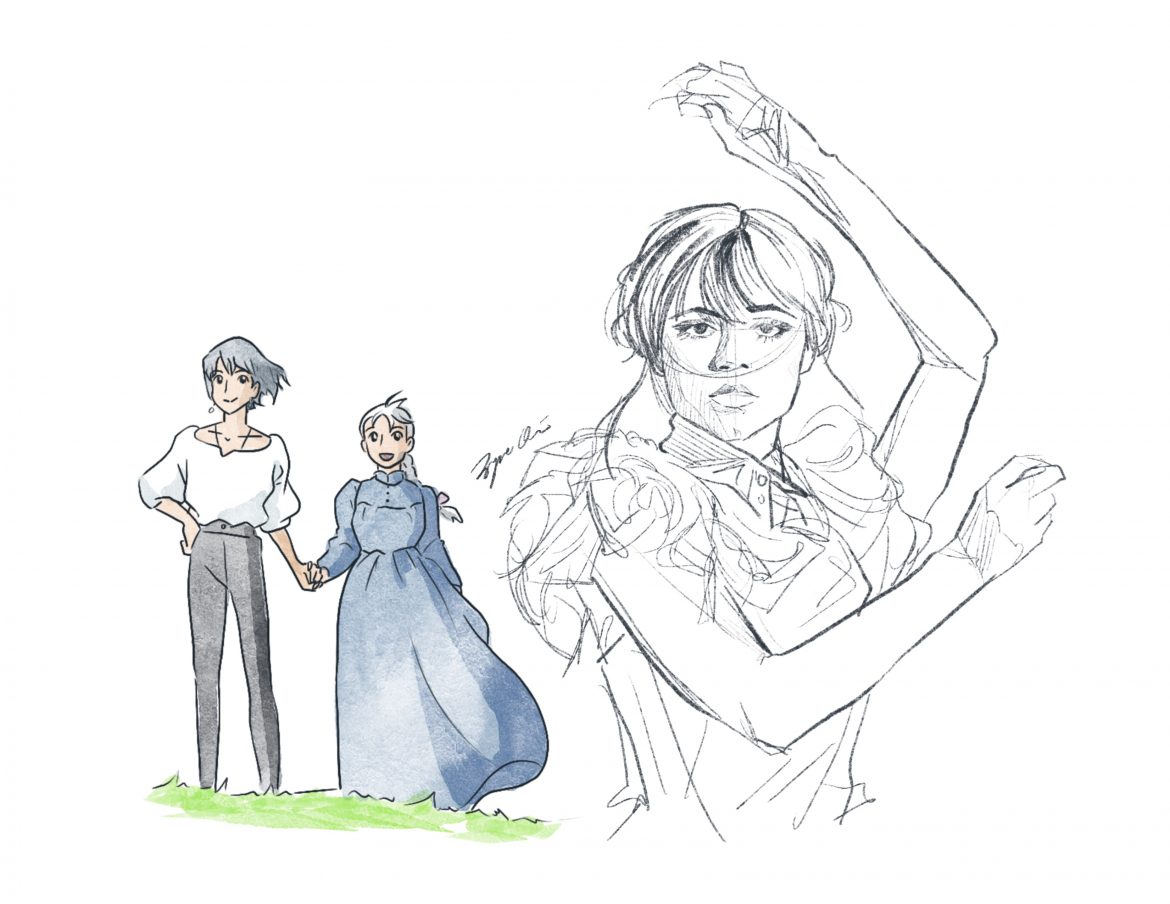Illustration Credit: Joyce Qiu, Illustration Editor
Why animation is especially enjoyable to watch
Lucia Harley, Contributor
Animation is a very pure and wholesome form of media. It can spread strong messages through its rudimentary simplicity and palatability. It connects with us in ways that live-action cannot. By appealing directly to our core emotions, animation opens our minds to new ideas and allows us to form unbiased truths for ourselves.
To preface, let me make it clear that I think, on most fronts, live-action movies and animated movies are incomparable. There are large differences in the measurement of artistic merit between the two filmmaking styles, as they are two very different mediums. Animation — defined as the method of photographing successive drawings/artworks or using puppets/other materials to create a moving film — offers a wide array of creative opportunities that live-action films cannot achieve. However, in comparison to live-action, I could not say that animation is more beautiful or detailed, because the opportunities that both art forms offer are so vastly different. Thus, the benefits of animation must also be quite different.
Animation holds a lot of power and value because of its unique ability to place big feelings, problems, and lessons into completely new worlds. It goes straight to the core emotions because the medium is not confined by the human form. When we watch a live-action movie or show, we place judgment onto the characters and situations whether we like to or not. Live-action often mimics real life, we may see actors we have biases against, or characters and sets that we easily judge because they look like what we see in real life. Live-action media uses this realistic effect to its benefit in its own way, but animation triumphs by creating an unbiased space of judgment and ideas.
Consider, for example, BoJack Horseman, a show that tackles themes like mental health, drug addiction, suicide, and abuse. The show handles these ideas well because it is animated. It is deeply depressing in nature, but is set in a wonderfully weird Hollywood world, and its characters are a strange mixture of humans and clothed talking animals. University of Toronto student and BoJack Horseman fan Mackenzie Douglas says, “It is comforting, it’s a reflection of a reality that makes you think about yourself. Animated shows are supposed to allow for an escape from reality; BoJack Horseman uses that to talk about difficult topics.” While live-action films must try quite hard to meet viewer expectations and succeed in being comforting and relatable, the blank canvas of animation allows its audience to relate and judge on their own accord.
The rudimentary properties of animated films also help to create a very wholesome viewing experience. Like BoJack Horseman, Wes Anderson’s films Isle of Dogs and Fantastic Mr. Fox also introduce important emotions and ideas in simple and digestible ways. Fantastic Mr. Fox creates a beautiful learning environment for both children and adults, with its message about acknowledging who we are and reflecting on ourselves. It is also notable that these beautiful environments are a result of the collective care and passion of artists. They use creativity to create sets that make for strong scenes that can be appreciated by people of all ages.
Animation is strong in a way that resembles poetry because it goes right to the heart and appeals to our core emotions. It is beautiful in its simplicity, but certainly is no simple medium, as it is a very intricate and creative form. To the viewer, animation is like a storybook that has come to life.




